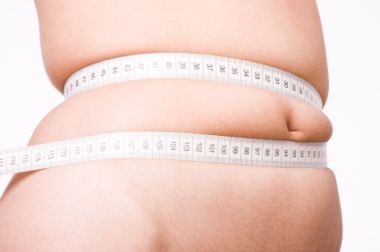So thank you Ogg from the bottom of my high-octane heart. Science impacts on virtually every part of our lives. It is something we consider, negotiate and benefit from every day. It’s also something which misleads us and confuses us from time to time. Ask five experts one question about nutrition and your head might explode from the variety of answers. Ask ten conditioning coaches or exercise scientists one question about training and we might find you two days from now sitting in the corner sucking your thumb. Or visit ten medical experts with one condition and you’re likely to get numerous diagnoses and more prescriptions than you can poke a stick at. Part of the problem with some scientific ‘facts’ is that they aren’t facts at all; they are scientific theories. Every day somewhere in the world another scientific ‘fact’ bites the dust. It is exposed for the fraud that it is. I could give you a hundred examples of this but I don’t want to put you to sleep, so instead I’ll give you a few things to chew on which might be relevant and of interest to you.
1. Height/Weight Charts
To say that a person should weigh a certain amount because they are so many inches tall is not only misleading but potentially dangerous. Stupid in fact. At best, these charts are vague indicators or guides of what may be a healthy weight range for some individuals. We have a rugby team here in Melbourne, Australia called the Storm. If you were to compare the weight of the individual players against the ‘scientific weight recommendations’ for their height you would discover that close to one hundred percent of the team would be classified as overweight or obese. And therefore all fall into the high health risk category. When in reality the only immediate health risk to the Storm boys is getting their heads ripped off by some unhappy neanderthal opposition players. According to ‘science’ I should weigh somewhere between about 12 kgs (26lbs) and 22 kgs (48.5lbs) less than I do right now. My body fat as I write this is 16% (healthy). If only I was seven feet tall… my weight would be perfect!
2. BMI
Your weight in kilograms divided by your height (in metres) squared. Here’s my BMI equation 91 kgs divided by (1.78m x 1.78m) = 28.72. This result tells me that I am significantly overweight and borderline obese. Hmmm. This science doesn’t factor in how much muscle individuals have. Check this out: Subject one: Male Height 180cm: (5’11”) Weight 100 kgs: (220 lbs) Actual Body-fat: 12% (low) BMI classification: 30.9 = FAT! Subject two: Male Height: 180 cm (5’11”) Weight: 80 kgs (176 lbs) Actual Body-fat: 25% (high-ish) BMI classification: 24.7 = NORMAL! Scientific crap.
3. Girth Measurements
Is waist measurement an indicator of potential health risk? Sometimes. For some people. Is it good to use a ‘set figure’ (in this case a 40 inch waist measurement) to evaluate the potential health risk for an entire population? Er… nope. Could a bloke have a 35 inch waist and be a higher risk than another bloke with a 40 inch waist? Of course.
4. Recommended Calorie Intakes
Dr. Bumnuts: “Okay, let’s see Mrs Smith… you’re 5’6″, you’re 42 years old, you currently weigh 70 kilos (154 lbs) and you have a sedentary job. Therefore you need 1,650 cals per day to maintain your current weight and 1,150 cals per day to drop down to 65 kilos (143 lbs) over the next ten weeks.” This almost sounds plausible. And if Mrs Smith expended the exact same amount of energy every day (1,650 cals worth of energy in this case), then the expert would be speaking the truth. But naturally our energy expenditure (how many cals we burn) can and does vary greatly from day to day. If Mrs Smith spends Saturday hiking, rock climbing and wrestling bears (as she does), she might need 4,000 calories just to break even for the day. But on Sunday as Mrs Smith and her sore muscles recline on the couch for the entire day, her energy needs will be drastically reduced – perhaps to as little as 1,200 calories. Same body – different needs. Bodies requirements vary from day to day which is why I always encourage people to learn to drive their own body rather than just following some generic one-approach-fits-all driver’s manual. The Point? Our energy needs (calorie requirements ) are not ‘set’ so consuming the same number of cals each day is not necessarily smart science.
5. High carb, Low carb, No carb, My head hurts.
6. Australia the Fattest Country.
A couple of weeks ago here in Australia we were informed by the scientists that we are now the fattest country in the world. Here are two excerpts taken from a leading newspaper Melbourne Herald Sun: “AUSTRALIA is the world’s most overweight nation, ahead of the notoriously supersized Americans, according to a new study.” ” The report, released ahead of the federal government’s obesity inquiry, presents the results of height and weight checks carried out on 14,000 adult Australians nationwide in 2005.” So in a country of 21,000,000 people they tested 0.06 percent of the population which means that they didn’t test 99.94 percent of us! I have two questions:
- How do they know that the 0.06 percent is representative of the 99.94 that they didn’t test?
- Why would they use an assessment (height/weight chart) which is scientifically flawed? Science is an incredibly valuable and necessary part of our existence, survival and development here on the big blue ball and I’m passionate about it. I’m also passionate about not being mislead or misinformed. We can learn and benefit so much from so many clever people in the world of science but like anything that involves humans, it’s flawed.



